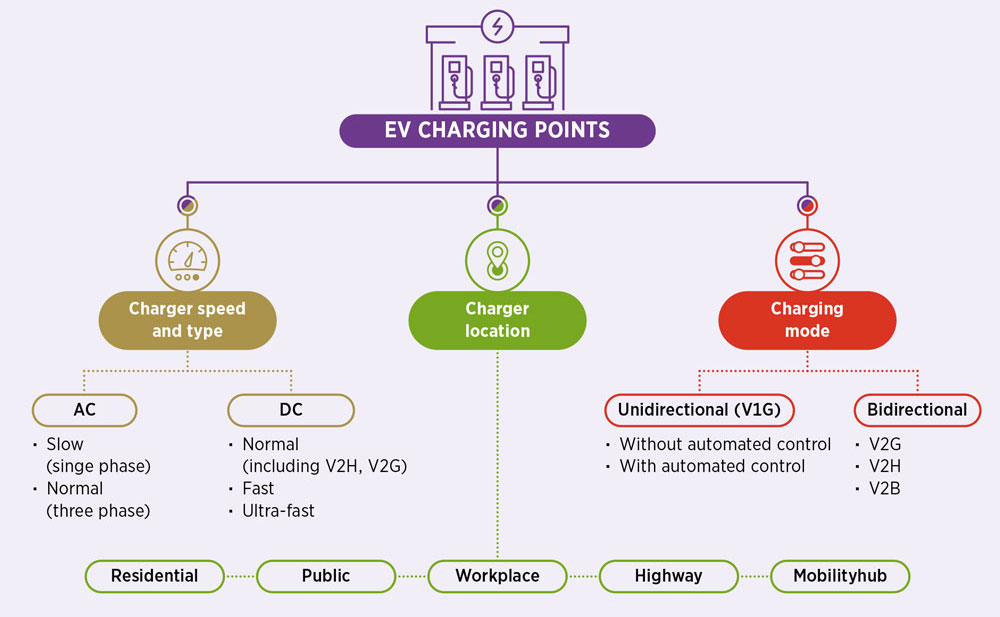Diversity and ubiquity of charging points
Overview of the status and impact of the innovation

What
The development of charging infrastructure must consider location, charging types, charging modes and other capabilities, with a goal of providing universal access. In cities, any shared parking space could become a charging point with an electricity connection, creating opportunities to charge at workplaces, commercial establishments and public spaces. Residential charging on private driveways is inexpensive and largely free of barriers, but innovative shared charging solutions are needed for communities and apartments with limited parking spaces. Where vehicles are parked for longer periods, as at homes and workplaces, V2G capabilities would provide important flexibility and other services to the grid (Box 3.4).
Why
To achieve the goal of universal access to charging, any parking spot must be considered a potential charging point. The key aim should be switching from the idea of EVs "parking to charge" to EVs "charging while parked". Shared charging infrastructure available to multiple parking slots is better than single parking slots equipped for EV charging.
BOX 3.4 Key aspects for developing charging infrastructure
Development needs to be diverse in terms of charger location, speed, type and mode, as shown in Figure 3.4.
FIGURE 3.5 The necessary diversity of charging infrastructure

The following factors must also be considered:
- Safety and comfort: It should be easy for customers to charge their EVs.
- Scalability: The number of public charging stations should keep up with growing demand.
- Visibility: Charging stations should be visible to drivers, although municipal aesthetics laws may oblige charging stations to blend in with the architecture of the city.
- Sustainable: Stations should draw on renewable electricity.
- Good customer service and maintenance: Possibilities include multiple languages and remote maintenance.
- Universality and interoperability: All users should be able to charge all their vehicles. There are four standards now for DC fast charging (in addition to Tesla’s proprietary one); hence, multi-standard charging stations should be encouraged or should be required.
Related kits
Power to mobility innovations
Innovations (35)
-
Technology and infrastructure
- 1 EV model evolution
- 2 EV batteries
- 3 Battery recycling technology
- 4 Diversity and ubiquity of charging points
- 5 Wireless charging
- 6 Overhead chargings
- 7 Portable charging stations
- 8 V2G systems
- 9 Digitalisation for energy management and smart charging
- 10 Blockchain-enabled transactions
- 11 Smart distribution transformers
- 12 Smart meters and submeters
-
Market design and regulation
-
System planning and operation
- 20 Cross-sectoral co-operation and Integrated planning
- 21 Including EV load in power system planning
- 22 Grid data transparency
- 23 Clean highway corridors
- 24 Operational flexibility in power systems to integrate EVs
- 25 Management of flexible EV load to integrate variable renewable energy
- 26 Management of flexible EV load to defer grid upgrades
- 27 EV as a resilience solution
-
Business models